If your phone screen starts tapping or scrolling on its own, you’re dealing with what’s commonly called ghost touch or phantom touch. It can be frustrating, especially when your device behaves as if haunted. Whether it’s an Android or an iPhone, this issue usually stems from hardware or software problems, but the good news is, many cases can be fixed permanently with the right approach.
In this guide, we’ll explain how to fix ghost touch permanently, what causes it, and when professional repair becomes necessary. You’ll also find tips based on information from credible sources like Apple Support, Asurion, Samsung Community, MacPaw, and iFixit.
What Is Ghost Touch and Why It Happens
Ghost touch happens when your phone screen registers touches that you didn’t make. You may notice random app openings, typing errors, or uncontrolled scrolling.
Common Causes of Ghost Touch
According to Asurion, the most common causes include:
-
Dirty or wet screen — moisture or dirt can send false signals to the touch sensor.
-
Defective screen protector or case — poor-quality accessories may interfere with touch sensitivity.
-
Software bugs — outdated or corrupted firmware may cause erratic screen behavior.
-
Overheating or water damage — excessive heat or humidity can affect the digitizer’s response.
-
Hardware failure — a damaged or loose digitizer connection often results in consistent ghost touches.
Meanwhile, iFixit adds that faulty display assemblies or loose display cables are frequent culprits, especially on phones that have been dropped or repaired before.
Quick Troubleshooting Steps
Before assuming your phone is broken, try these simple fixes first.
Step-by-Step Solutions
| Step | Action | Purpose |
|---|---|---|
| 1 | Clean the screen with a soft, dry cloth | Removes dirt or moisture that may cause false input |
| 2 | Remove screen protector and case | Eliminates accessory interference |
| 3 | Restart the phone | Clears temporary software glitches |
| 4 | Check for software updates | Fixes touch-related firmware bugs |
| 5 | Boot in Safe Mode | Determines if third-party apps are responsible |
| 6 | Calibrate the touch screen | Re-aligns the digitizer sensitivity |
| 7 | Factory reset (as last resort) | Eliminates persistent software issues |
According to Samsung Community, if ghost touch persists even in Safe Mode, the issue is likely hardware-related. That means your screen or digitizer might need replacement.
How to Stop Phantom Touches on Android
Android devices are more prone to ghost touch due to the variety of hardware used across brands. Here are some effective fixes:
1. Check Screen Protectors and Chargers
Low-quality tempered glass or third-party chargers can cause voltage irregularities. Try removing the protector or unplugging the charger to test if the problem stops.
2. Update or Reinstall Firmware
Some ghost touch cases stem from outdated firmware. Regularly check your Settings → System → Software Update. If the issue started after a major update, consider reinstalling the OS using the manufacturer’s tool.
3. Use Safe Mode to Identify Problematic Apps
Press and hold the power button, then tap and hold “Power Off” to enter Safe Mode. If ghost touches disappear, uninstall recently installed apps.
4. Calibrate the Touch Screen
Use built-in calibration tools or third-party apps to recalibrate touch accuracy. This helps if the sensor misreads your finger position.
How to Fix Ghost Touch on iPhone
Apple users are not immune to this problem. Apple Support suggests these steps:
-
Restart your iPhone.
-
Ensure the screen is clean and dry.
-
Remove all accessories, such as Lightning cables, cases, and screen protectors.
-
Update iOS to the latest version.
-
Reset all settings, or if needed, restore your iPhone via iTunes or Finder.
If the issue continues, Apple recommends running a diagnostic test through an authorized service center. On certain iPhone X units, ghost touch was linked to a known display module issue, Apple even offered free repairs for affected devices.
When Factory Reset Helps (and When It Doesn’t)
A factory reset can solve ghost touch caused by software corruption, malware, or bad settings. However, MacPaw notes that if the problem is physical, like a cracked screen or faulty digitizer, resetting won’t help.
To perform a reset safely:
-
Back up your data first.
-
Go to Settings → System → Reset options → Erase all data (on Android).
-
On iPhone, go to Settings → General → Transfer or Reset iPhone → Erase All Content and Settings.
After resetting, test the device before restoring backups to avoid reintroducing corrupted data.
Permanent Fixes: Hardware Solutions
If all software-based methods fail, the issue probably lies in the digitizer, the thin layer that detects touch input beneath the glass.
Replacing the Digitizer
iFixit explains that ghost touch can occur when the digitizer cable loosens or the touch IC (integrated circuit) malfunctions. Replacing the entire display assembly is the most reliable permanent fix.
Signs you might need replacement:
-
Ghost touches happen even when idle.
-
Safe Mode and reset do not fix it.
-
The screen shows flickering or delayed response.
Estimated Repair Costs
| Type of Repair | Typical Price Range | Notes |
|---|---|---|
| Screen protector or cleaning | $0–$20 | Temporary solution |
| Software repair (update/reset) | Free | Fixes minor glitches |
| Digitizer replacement | $80–$200 | Permanent hardware fix |
| Full screen assembly replacement | $120–$300 | For severe physical damage |
Comparing Hardware vs Software Fixes
| Aspect | Software Fix | Hardware Fix |
|---|---|---|
| Difficulty | Easy to moderate | Requires technician |
| Cost | Low | Medium to high |
| Success rate | 60–70% | 90–100% |
| Permanent solution | Only if software-related | Yes, for hardware issues |
As shown above, software fixes are worth trying first. But when the digitizer is damaged, no update or reset will solve the issue, replacement is the only permanent solution.
Preventing Future Ghost Touch
Once you’ve fixed it, prevention is key. Follow these habits to keep your touch screen healthy:
-
Use only original or certified chargers to prevent power surges.
-
Avoid using the phone under extreme heat or humidity.
-
Clean your screen regularly with microfiber cloths.
-
Choose high-quality screen protectors and cases.
-
Keep your software up to date to minimize firmware bugs.
-
Don’t place your phone under heavy pressure or near magnetic surfaces.
Conclusion
Ghost touch may seem like a mysterious problem, but it’s usually easy to diagnose once you understand the causes. Most cases can be fixed with cleaning, calibration, or software updates. When that doesn’t work, replacing the screen or digitizer offers a permanent fix.
Based on reports from Asurion, iFixit, Apple Support, MacPaw, and Samsung Community, a proper diagnosis, starting from simple cleaning up to professional repair, ensures you’ll stop ghost touches for good.
If your phone behaves like it’s haunted, remember: it’s not a ghost, it’s just science, and you can fix it.

 7 Safe Tips for Buying Used Phones on Online Marketplaces in 2025 and Signs of Fake Phones
7 Safe Tips for Buying Used Phones on Online Marketplaces in 2025 and Signs of Fake Phones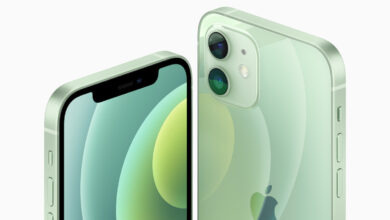 IPhone 12: Still Strong in 2025! Old Flagship with Unbeatable A14 Bionic Performance
IPhone 12: Still Strong in 2025! Old Flagship with Unbeatable A14 Bionic Performance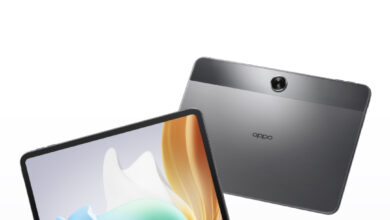 Oppo Pad: Ultra-Thin Tablet for Gaming, Elegant Design Makes Competitors Nervous!
Oppo Pad: Ultra-Thin Tablet for Gaming, Elegant Design Makes Competitors Nervous! Indonesia AI Report 2025 Reveals 5 Job Fields That Will Emerge Due to AI
Indonesia AI Report 2025 Reveals 5 Job Fields That Will Emerge Due to AI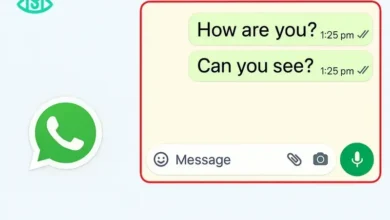 5 Ways to View WhatsApp Status Secretly Without Blue Checkmarks
5 Ways to View WhatsApp Status Secretly Without Blue Checkmarks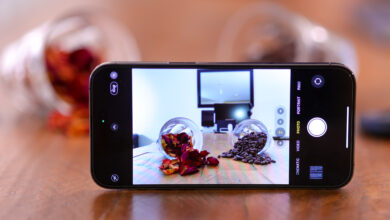 iPhone Photography: Myths or Facts? Is the iPhone the Best for Video Quality?
iPhone Photography: Myths or Facts? Is the iPhone the Best for Video Quality?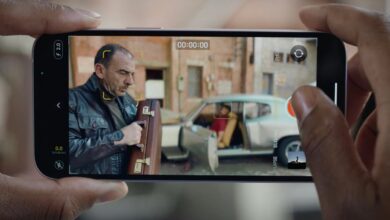 iPhone 13: Still Cool in 2025! OLED Screen, Cinematic Mode, and Stable Performance Make It Hard to Switch to Android
iPhone 13: Still Cool in 2025! OLED Screen, Cinematic Mode, and Stable Performance Make It Hard to Switch to Android ZTE Nubia Z80 Ultra Official, Flagship Phone with Full Screen and Special Camera Buttons
ZTE Nubia Z80 Ultra Official, Flagship Phone with Full Screen and Special Camera Buttons